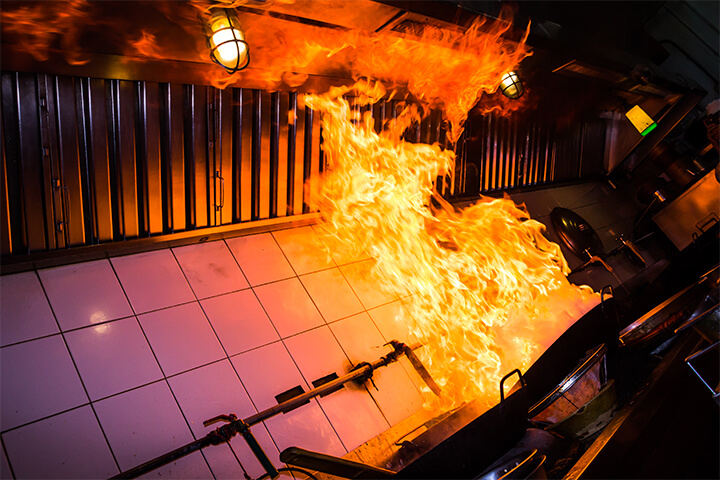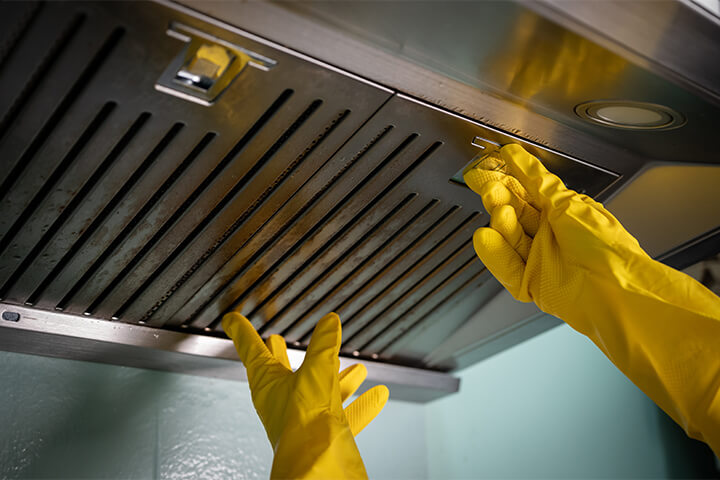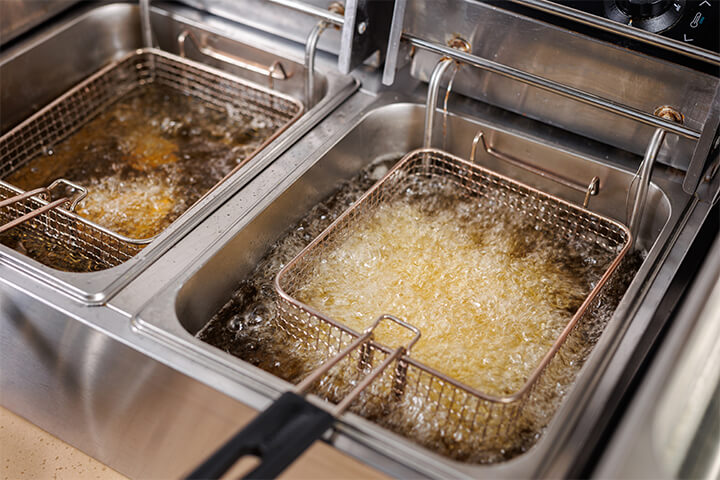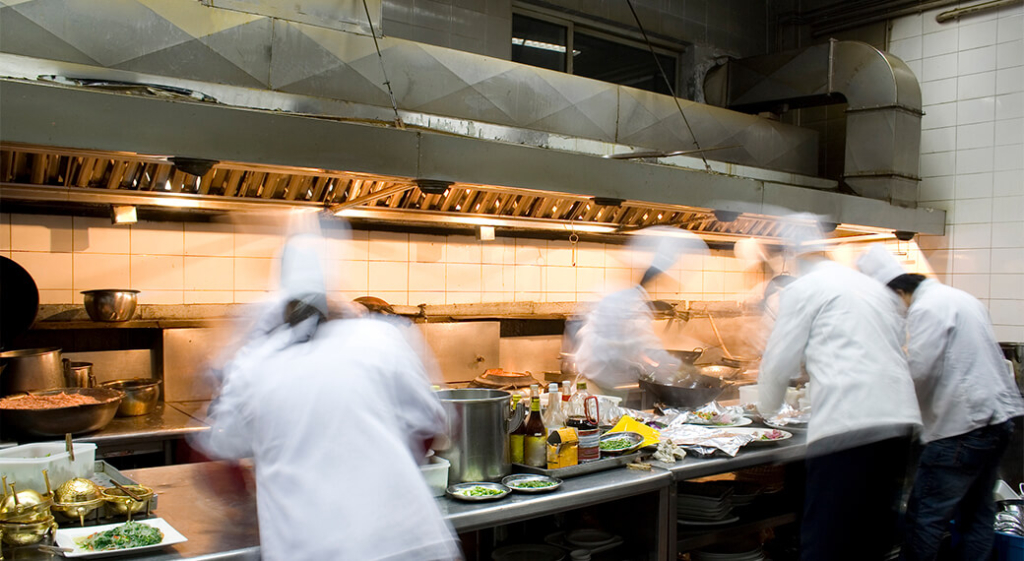Proper hood ventilation is vital to the success of your restaurant, as well as the safety and comfort of your staff and guests. Although we introduced this topic in Part 5, Part 6 of our Design & Build series goes into greater detail about the ins and outs of hood ventilation that every restaurant owner needs to know.
A Breath of Fresh Insights on Hood Ventilation

Regardless of your chosen heat source—be it a gas range, electric convection oven, or any cooking source in between—the fundamental principle remains constant: if a pan can be heated and utilized for cooking, a dedicated exhaust hood to fight lipid-laden aerosols (commonly known as “grease laden vapors”) is essential. For instance, the simple test of “Can you cook bacon on it?” serves as a practical, albeit rudimentary, indicator of the need for a commercial-grade hood system.
Hood ventilation is necessary to effectively capture and remove grease-laden vapors, smoke, and other byproducts generated during cooking. Electric convection ovens, griddles, broilers, and even certain specialized deep fryers generate significant airborne contaminants that demand proper extraction.
Well-designed systems create a negative pressure environment above cooking appliances, drawing air and its associated pollutants into the hood and ductwork. Hood ventilation systems must be designed to meet or exceed industry standards, including those established by the National Fire Protection Association (NFPA) and the International Mechanical Code (IMC). The system should incorporate appropriate capture velocities, airflow rates, and filtration mechanisms.
Regular cleaning and maintenance are essential to ensure optimal performance and prevent the accumulation of flammable residues.
How Poor Ventilation Wreaks Kitchen Havoc

When lipid-laden aerosols build up in your commercial kitchen, it will hurt your business operationally, environmentally, and decrease its overall viability.
Combustion and Fire Hazards
The inherent flammability of lipid aerosols stems from their chemical composition. These compounds, when heated, readily vaporize and can form explosive mixtures with the air within the kitchen environment. Inadequate ventilation allows these aerosols to accumulate, dramatically increasing the risk of flash fires and sustained combustion.
Insurers meticulously investigate fire incidents. The presence of accumulated lipid residues and the absence of compliant hood ventilation systems constitute a clear violation of safety standards, leading to the denial of claims and potentially, legal ramifications.
Occupational Health and Respiratory Impact
Inhaling grease-laden vapors over prolonged periods impairs respiratory health. These aerosols contain a complex array of particulate matter that induces inflammation and exacerbate pre-existing respiratory conditions.
Environmental Contamination and Material Degradation
The deposition of lipid aerosols on surfaces, including reflective ceiling tiles and walls, leads to the formation of a tenacious, adhesive film. This film diminishes the aesthetic appeal of the space while accelerating the degradation of your kitchen.
The Customer Experience
The pervasive odor of rancid fats and oils, if not effectively controlled, will permeate the entire dining environment. Naturally, this sensory assault would deter guests from returning and damage the restaurant’s reputation. Our olfactory receptors are highly sensitive to lipid oxidation products, even at low concentrations.
Gas vs. Electric Cooking Equipment

Electric cooking equipment is different than gas cooking equipment because it doesn’t produce the same harmful, flammable byproducts as gas equipment. Because of this difference, electric cooking equipment can use “ventless hoods.”
Ventless hoods utilize HEPA filters, which capture grease particles with very small openings. This effectively cleans the air of grease. However, it’s important to note that ventless hoods primarily address grease removal; they do not remove the heat generated by cooking.
The High Stakes of Hood Ventilation

The necessity of a robust and properly engineered hood ventilation system in any commercial kitchen cannot be overstated. Beyond simply complying with industry standards like NFPA and IMC, effective ventilation is paramount for safeguarding against fire hazards, maintaining a healthy and safe environment for staff, protecting your establishment from insurance liabilities, and ensuring a positive customer experience.
If you missed any of our previous articles in this series, catch up here:
Part One: Design & Build: How to Choose Your Team
Part Two: Design & Build: How to Choose the Best Location for Your Restaurant
Part Three: Design & Build: Budgeting for Your Restaurant Launch
Part Four: Design & Build: Design Efficiency & Operational Flow
Part Five: Design & Build: Watch Your MEPs



